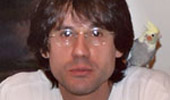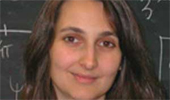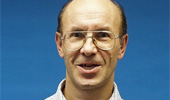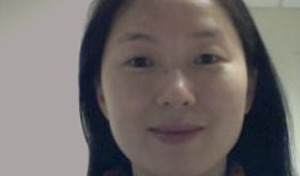The Condensed Matter & Surface Sciences Colloquium Series presents George Martins on “p?!” on Thursday, Feb. 20, at 4:10 p.m. in Walter Lecture Hall 245.
Martins is Associate Professor of Physics at Oakland University. His research interests are in the area of strongly correlated electrons. “In colaboration with research groups in the United States, Europe and Brazil, he has been applying different numerical techniques to probe and understand the properties of strongly correlated electronic systems. ‘Strongly correlated condensed matter’ is truly a vast area and there are a variety of different computational techniques that can be applied to obtain understanding of their multi-faceted behavior. Dr. Martins has concentrated for now on Exact Diagonalization Methods as a tool to gain understanding of nano structures, High- Tc cuprates, ladders and spin chains and more recently frustrated spin systems,” according to the Oakland Physics research webpage.
Abstract: Someone once said: “Research is to see what everybody has seen and to think what nobody has thought.” Yet, physicists, when interpreting data, sometimes scratch their heads and ask “What is Nature trying to tell us?” In hindsight, it is easy to confirm the former and answer the latter.
 High-temperature superconductivity (HTS) has for quite a while been an area of research that has had physicists obsessively staring at data and painfully scratching their heads. Intriguing new data has flooded and revitalized this field in the last five years: 2008 saw the emergence of Iron-based HTS. Like the “old” cuprates, the new so-called iron-pnictides are two-dimensional materials involving d-type electrons. Differences and similarities abound between these copper and iron compounds, posing again the question above: “What is Nature….”
High-temperature superconductivity (HTS) has for quite a while been an area of research that has had physicists obsessively staring at data and painfully scratching their heads. Intriguing new data has flooded and revitalized this field in the last five years: 2008 saw the emergence of Iron-based HTS. Like the “old” cuprates, the new so-called iron-pnictides are two-dimensional materials involving d-type electrons. Differences and similarities abound between these copper and iron compounds, posing again the question above: “What is Nature….”
Will 2012 mark the year of new questions? In this talk, we will start from the premise that the newly discovered material LaOBiS2 displays HTS (or, equivalently, unconventional superconductivity), by assuming that the pairing mechanism is provided by strong spin fluctuations. We use the Random Phase Approximation, exactly as used for Iron materials, and make predictions for the symmetry of the paired electrons. The intriguing new thing here is that the electrons forming the pairs originate from p-type orbitals. And this is indeed new!! If it turns out that unconventional superconductivity occurs in BIS2 compounds (and there is already experimental evidence pointing in this direction) one HAS to ask again: ‘What is Nature trying to tell us?’




















Comments